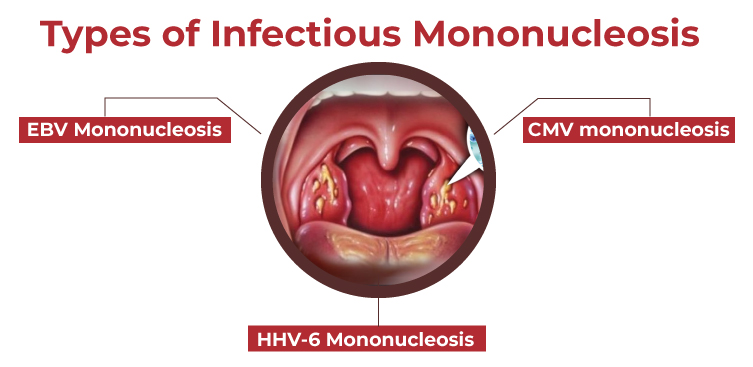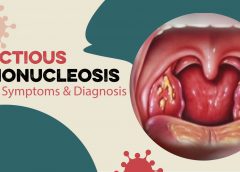Have you ever heard about the “kissing disease”? Well, that’s Infectious Mononucleosis- a type of viral infection. It has affected people of all ages for centuries. Although often considered a minor illness, mono can have serious complications. It can even be life-threatening in rare cases.
In this blog, we’ll take a closer look at the history of mono, its symptoms, and how it’s transmitted. We’ll also address some common misconceptions about the disease. As well as explore available treatments and preventive measures.
Whether you’re a student, a parent, or simply someone curious about this mysterious illness, this blog is for you. It will help you to understand mono and how to protect yourself.
History of Infectious Mononucleosis
Infectious Mononucleosis can be traced back to the early 20th century. Doctors noticed a pattern of symptoms among their patients that they couldn’t explain. The disease was eventually named “mononucleosis .”It refers to the high number of mononuclear white blood cells in patients’ blood.
In the following decades, scientists made several important discoveries about mono. It is caused by the Epstein-Barr virus (EBV), which was first identified in 1964.
Today, we know that EBV is a member of the herpes virus family. It is one of the most common viruses in the world. Nearly 90% of adults test positive for the virus at some point.
It’s important to note that Infectious Mononucleosis can happen to anyone. So it’s essential to be aware of the symptoms and how to prevent them. Let’s take a closer look at the types, causes, diagnosis, treatment, and prevention of Infectious Mononucleosis.
Types of Infectious Mononucleosis
There are three types of Mononucleosis. Epstein-Barr virus (EBV) mononucleosis, cytomegalovirus (CMV) mononucleosis, and human herpesvirus-6 (HHV-6) mononucleosis.

- EBV mononucleosis is the most common and is caused by the EBV virus.
- CMV mononucleosis is caused by the CMV virus and is the second most common.
- HHV-6 Mononucleosis is the least common and is caused by the HHV-6 virus.
What is Epstein-Barr Virus (EBV)?
Think of the EBV as a cold or flu virus. It can be transmitted from person to person, like a cold or flu. When the EBV infects you, it can cause the symptoms of Infectious Mononucleosis. The EBV can live in your body for a long time, even after the symptoms of Infectious Mononucleosis are gone.
Infectious mononucleosis symptoms typically appear within two months of exposure to the virus. Other viruses can also cause infectious Mononucleosis. These include cytomegalovirus (CMV), Human Herpesvirus-6 (HHV-6), and other herpes viruses.
Symptoms of Infectious Mononucleosis
The symptoms of infectious Mononucleosis can vary from person to person, but the most common symptoms include the following:
-Fever
-Sore throat
-Swollen lymph nodes, particularly in the neck and armpits
-Fatigue
-Headache
-Enlarged spleen or liver (in some cases)
In some cases, symptoms may not appear for several weeks after infection. And the disease can be mistaken for other illnesses, such as the flu or strep throat. However, a specific blood test can confirm the diagnosis of mono.
It’s also important to note that mono is most commonly associated with a sore throat, swollen lymph nodes, and fatigue. In some cases, the symptoms may be more severe or even life-threatening, particularly if the spleen is enlarged. Therefore, seeking medical attention is essential if you suspect you have mono.
How is Infectious Mononucleosis Transmitted?
Infectious Mononucleosis is primarily transmitted through contact with the saliva of an infected person. This is why the disease is often referred to as the “kissing disease.” However, EBV can also be transmitted through bodily fluids such as blood and semen.
It’s important to note that mono is not as contagious as other illnesses. Most people do not become infected even if they have close contact with someone with the disease. Additionally, people can carry the EBV virus for many years without developing mono.
While mono is most commonly associated with teenagers and young adults, it can affect people of all ages. It is also more common in people with a weakened immune system, such as HIV or cancer.
Who is at Higher Risk of Mononucleosis?
People at risk for developing infectious Mononucleosis include:
• College students and other young adults
• Adults with weakened immune systems
• Children and adolescents
• People who have recently received a blood transfusion or organ transplant.
Infectious Mononucleosis: Common Misconceptions
Despite its prevalence, there are still many misconceptions about infectious Mononucleosis. One of the most common misconceptions is that mono is a minor illness. And that rest and over-the-counter medication are ideal treatments for the infection.
However, mono can have serious complications, particularly if the spleen is enlarged. In rare cases, the spleen can rupture, which can be life-threatening.
Another misconception is that mono only affects teenagers and young adults. While it is more common in this age group, mono can affect people of all ages.
It’s also important to note that while most people recover fully from mono, some may experience fatigue, weakness, or other symptoms for several months after the initial infection.
Diagnosis of Infectious Mononucleosis
The diagnosis is based on symptoms like fever, sore throat, swollen lymph nodes, and fatigue. However, a specific blood test can confirm the diagnosis of mono.
The most commonly used test is the Monospot test, which looks for antibodies to the EBV in the blood. A positive Monospot test confirms the diagnosis of mono. Other tests may also be performed, such as a complete blood count (CBC) and liver function tests.
It’s also important to note that mono can be mistaken for other illnesses like the flu or strep throat. Therefore, seeking medical attention is essential if you suspect you have mono.
Complications of Infectious Mononucleosis
Some people with infectious Mononucleosis may experience complications. These include:
- Enlarged Spleen: An enlarged spleen can rupture, causing internal bleeding.
- Anaemia: The condition of having a reduced number of red blood cells.
- Neurological Complications: Infectious Mononucleosis can cause brain and spinal cord. inflammation. This can lead to headaches, confusion, and seizures.
- Acute Liver Failure: Infectious Mononucleosis can cause inflammation of the liver. In rare cases, this can lead to acute liver failure.
Infectious Mononucleosis Treatment and Prevention
The treatment of infectious Mononucleosis primarily focuses on relieving symptoms. This may include:
-Getting plenty of rest
-Drinking fluids
-Using OTC pain relievers (ibuprofen or acetaminophen)
In some cases, doctors may also prescribe antiviral medication. This is done to shorten the duration of the illness. It’s also important to avoid activities that could lead to a ruptured spleen.
Most people recover fully from mono. Yet, some may experience fatigue and weakness for a few months. So, it’s important to follow treatment and management recommendations strictly.
A Brief Recap
In conclusion, infectious mononucleosis, also known as mono, is a viral infection caused by the Epstein-Barr virus. It is commonly characterized by symptoms such as fever, sore throat, swollen lymph nodes, and fatigue. Diagnosis is typically made based on these symptoms and confirmed through blood tests.
It’s important to note that although mono is often referred to as the “kissing disease,” it can also be spread through other forms of close contact, as well as through contact with infected bodily fluids. The good news is that mono usually resolves on its own and most people will recover fully within a few weeks to a few months. It is usually self-limiting, but in some cases, it can be a lifelong condition. Practicing good hygiene and avoiding close contact is essential to prevent infection.

Leave a Reply
You must be logged in to post a comment.